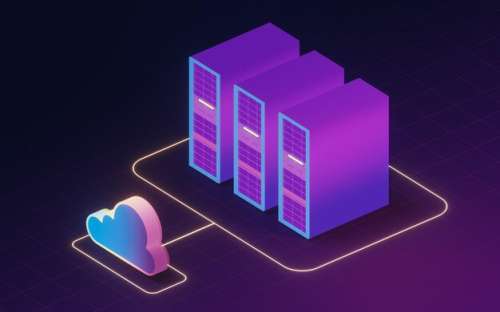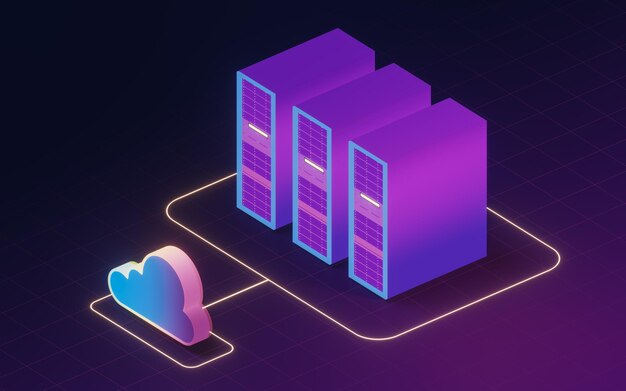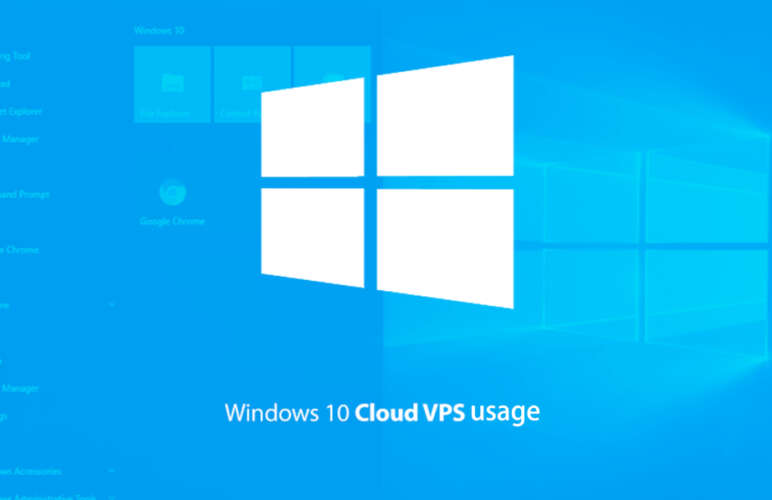Data Storage Evolution: From Punch Cards to Cloud Advancements Unveiled

The journey of data storage spans a remarkable trajectory, progressing from rudimentary methods like punch cards to contemporary data centers and the emergence of cloud storage services. The intricate landscape of data center architecture, design, facilities, and data management practices has undergone profound transformations to accommodate the escalating necessity and expansion of information. In this blog, we delve into the historical evolution of modern data center design, architecture, storage infrastructure management, and storage resources.
Exploring pivotal milestones and technological breakthroughs, we unravel the shifts that have redefined the landscape of data storage and accessibility. From the early era of physical storage to the transformative impact of virtual cloud computing systems, this blog aims to illuminate the fascinating advancements that have steered the trajectory of data storage. Join us on this exploration of how data storage has evolved, shaping a future where data is not only readily available but also securely preserved.
Jump To...
The Dawn of Data Storage
Data storage in the early days of computing was intricate. One of the earliest methods was punch cards, typically made of paper or cardboard, featuring holes punched to represent data. In the 19th and 20th centuries, punch cards found extensive use in tasks like census tabulation. However, they had limitations in storage capacity and susceptibility to physical damage.
As computing advanced, magnetic tapes emerged as a more reliable storage method. These tapes, covered with magnetized particles, offered greater storage capacities and faster access times than punch cards. They played a crucial role in storing massive data sets, such as business records and scientific research data.
A groundbreaking moment occurred with the advent of the first computers. The IBM 305 RAMAC, introduced in 1956, revolutionized data storage by incorporating the first hard disk drive (HDD). Providing a non-volatile storage medium with significant capacity, this innovation transformed the landscape of early computer systems.
A Pivotal Advancement: Introducing Hard Disk Storage
A crucial milestone in data storage evolution occurred with the introduction of hard disk storage. Utilizing rotating platters coated with magnetic materials, commonly referred to as hard disk drives (HDDs), data is stored and retrieved. The IBM 305 RAMAC’s debut, featuring a substantial 5-megabyte storage capacity, laid the foundation for the progression of more sophisticated HDDs.
Over time, hard disks have undergone substantial improvements in storage capacity, data transfer rates, and form factors, influencing data usage profoundly. Presently, HDDs can accommodate terabytes (TB) and even petabytes (PB) of data. Due to their cost-effectiveness and expansive storage capabilities, HDDs find widespread use in desktop computers, servers, and data centers. Their ability to store vast amounts of data in a compact form factor renders HDDs indispensable for diverse applications.
The Emergence of Floppy Disks and Compact Discs
The 1970s and 1980s witnessed a transformative period in data storage with the advent of floppy disks and compact discs (CDs). This era marked a shift towards enhanced portability and streamlined data transfer. Initially, floppy disks boasted a modest capacity of 80 kilobits (KB), evolving rapidly to larger sizes, with 1.44 megabytes (MB) becoming the standard for personal computers. Floppy disks played a pivotal role in storing and transferring files, software, and even operating systems.
Compact discs, on the other hand, revolutionized multimedia content storage. Offering significantly larger storage space compared to floppy disks, standard CD-ROMs provided 650 megabytes (MB) of storage. This breakthrough allowed the distribution of software, music, and movies on a single disc. The introduction of writable and rewritable CDs further expanded their utility, enabling users to burn and rewrite data repeatedly.
While floppy disks and CDs were instrumental in the growth of personal computing and data storage, their limitations became apparent as technology progressed. The escalating sizes of files and applications outpaced the storage capacities of these mediums, necessitating more advanced storage solutions to meet the demands of evolving technology.
Flash storage transforms Portability and Speed
In the late 1990s and early 2000s, a new era of portability and speed emerged with the inception of flash storage technology. Utilizing NAND-based memory cells, flash storage delivers rapid data transfer rates, compact form factors, and heightened durability. USB drives and SD cards, introduced during this period, facilitated effortless carrying and transferring of extensive data volumes.
The landscape of data access and storage underwent a profound transformation with the integration of flash storage technologies. Diverging from traditional methods, flash storage lacks moving parts, ensuring exceptional robustness and resistance to damage. This technology not only guarantees swift data access and transfer rates but also contributes to enhanced overall performance and productivity.
Characterized by their diminutive size and lightweight nature, flash storage devices offer exceptional portability, empowering users to access and transfer data seamlessly on the go. Flash storage played a pivotal role in the evolution of mobile devices, providing a reliable solution for expanding storage space and sharing data while on the move.
Entering the Modern Era: Solid State Drives (SSDs)
In the contemporary evolution of data storage, solid-state drives (SSDs) stand as a revolutionary force. Unlike conventional hard disk drives (HDDs), SSDs do not feature moving parts; instead, they leverage flash memory for data storage. This design choice leads to swifter access times, heightened reliability, and reduced power consumption.
The popularity of SSDs has surged, particularly in high-performance PCs. Offering accelerated read and write speeds compared to HDDs, SSDs contribute to faster boot times, swift application loading, and an overall boost in system performance. Furthermore, the absence of moving parts in SSDs results in less noise, lower heat generation, and a diminished likelihood of mechanical breakdowns.
Built on flash memory, SSDs bring numerous advantages over traditional storage methods. They facilitate rapid file retrieval and modifications, coupled with seamless random data access. Unlike HDDs, SSDs eliminate the need for disk defragmentation, enhancing overall efficiency and reliability.
With consumer-grade options available in capacities spanning from hundreds of gigabytes (GB) to multiple terabytes (TB), SSDs have made remarkable strides in storage capacity. They have emerged as the standard storage medium for data-intensive applications in business sectors such as gaming, video editing, support infrastructure, managed services data centers design, business applications, colocation data centers, software-defined networking and security, and professional workstations. SSDs have also garnered favor in the data center provider business sector due to their speed, redundant capacity components, and reliability in server applications and data-intensive tasks within enterprise data centers.
The decreasing cost of SSDs over the years has rendered them more budget-friendly. Coupled with their superior performance and reliability, this has led to widespread adoption in consumer devices and as integral components in various computing systems.
As technology advances, SSDs are anticipated to contribute to the continual growth of cloud-based data centers and the scalability of data center equipment tiers providers. Positioned to dominate the enterprise data center security and storage market, SSDs are addressing the escalating demands for digital storage, providing data centers across different tiers with faster and more reliable access compared to other storage solutions.
Charting the Future: Beyond Cloud Storage
As we step into the future, cloud data center servers and storage have emerged as the predominant force in data storage. This paradigm allows users to store their data remotely on data center infrastructures and servers managed by third-party cloud service providers. Offering nearly limitless storage capacity and the flexibility to scale on demand, cloud storage provides convenience and accessibility from any location with an internet connection.
The explosive growth of data fueled by the Internet of Things (IoT) and the demand for big data analytics necessitates scalable and efficient storage solutions. Cloud storage providers leverage cutting-edge infrastructure within extensive data centers, ensuring high availability, redundancy, and durability of stored data.
Cloud storage presents several advantages over traditional storage methods. The need for users to manage on-premises physical servers, storage at multiple data centers, and their data center infrastructure and management becomes obsolete, leading to reduced costs and complexity. Data redundancy is ensured through replication and backup across various sites, minimizing the risk of data loss. Additionally, cloud storage simplifies the process of sharing and retrieving data from any location.
The future of hyperscale data centers, cloud data center support infrastructure, and storage extends beyond traditional cloud storage. Edge computing and distributed storage systems are reshaping the storage landscape. Edge computing, leveraging both edge data centers and in-data center facilities, reduces latency and facilitates real-time data processing by bringing storage and computation closer to the data source. Meanwhile, distributed storage systems, utilizing networked nodes, enhance the availability and resilience of large enterprise data centers and expansive data centers.
Privacy and security will take center stage in the future of data storage as data volume and complexity continue to escalate. Robust measures, including data encryption, access control mechanisms, advanced security systems, and authentication processes, will be implemented to safeguard sensitive information within storage systems.
Final Word
The evolution of data storage has been prompted by the imperative to manage the continuously expanding volume of information. Each progression, spanning punch cards and magnetic tapes to hard drives, floppy disks, flash storage, and solid-state drives, has yielded enhancements in speed, capacity, and portability. The introduction of cloud storage has revolutionized data storage and management, with forthcoming trends pointing towards enhanced privacy, security, and distributed storage solutions. In the ongoing evolution of technology, data storage will persist as a vital facet of our digital existence, attuning itself to the dynamic needs and demands of our interconnected world.
Jump To...
Frequently Asked Questions
Anticipate ongoing progress in the future of data storage, marked by advancements in privacy, security, and real-time data processing. Essential technologies such as edge computing and distributed storage systems are expected to play a pivotal role in optimizing data storage and management, specifically addressing the demands posed by IoT and big data applications.
When choosing a data storage solution, critical considerations involve storage capacity, performance, dependability, scalability, security capabilities, interoperability with current systems, and cost-efficiency.
Despite advancements in contemporary data storage systems that enhance reliability, there remains a potential for data loss or corruption. Elements such as hardware malfunctions, software glitches, power disruptions, and human mistakes can contribute to data loss. To address these risks, incorporating routine backup procedures and deploying measures for data redundancy can effectively mitigate potential issues.
The transformation of data storage has significantly influenced businesses and organizations, empowering them to store and analyze extensive data sets. This has resulted in heightened decision-making capabilities, increased productivity, and the emergence of fresh business prospects. Moreover, the transition to cloud storage has facilitated remote collaboration, streamlined data sharing, and generated cost efficiencies by reducing the need for extensive infrastructure investments.
The environmental impact of data storage technologies has become a significant concern, primarily attributed to the energy consumption of data centers and the disposal of electronic waste. Initiatives are underway to enhance the energy efficiency of data centers, and there is a growing emphasis on advocating responsible recycling and disposal practices for outdated storage devices.
Certainly, data storage technologies are susceptible to obsolescence as advancements in technology introduce new storage mediums and formats with enhanced capacities, faster speeds, and improved functionality. Nonetheless, it is imperative to establish effective data migration strategies to seamlessly transfer data from obsolete storage technologies to newer ones.
Data storage assumes a pivotal role in adhering to data privacy regulations. Organizations must incorporate suitable security measures, including data encryption, access controls, and data retention policies, to safeguard sensitive information and align with regulations such as the California Consumer Privacy Act (CCPA) or the General Data Protection Regulation (GDPR). Failure to comply with these regulations can lead to substantial penalties and damage to the organization’s reputation.




